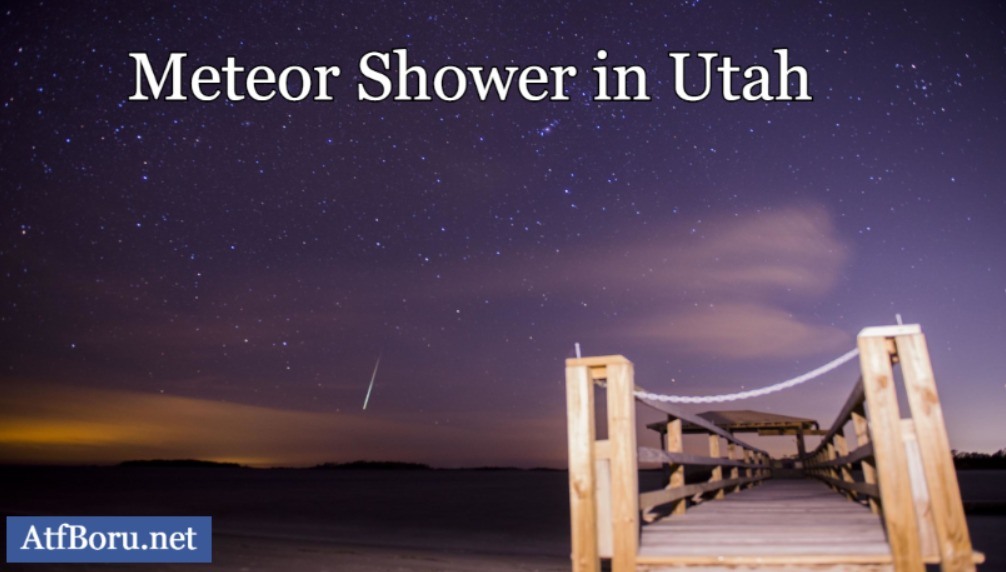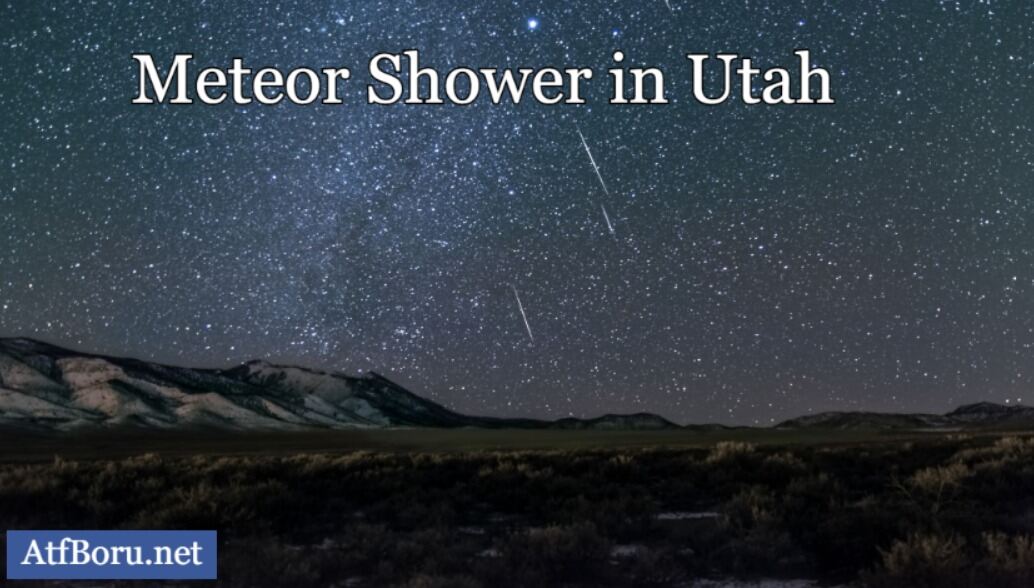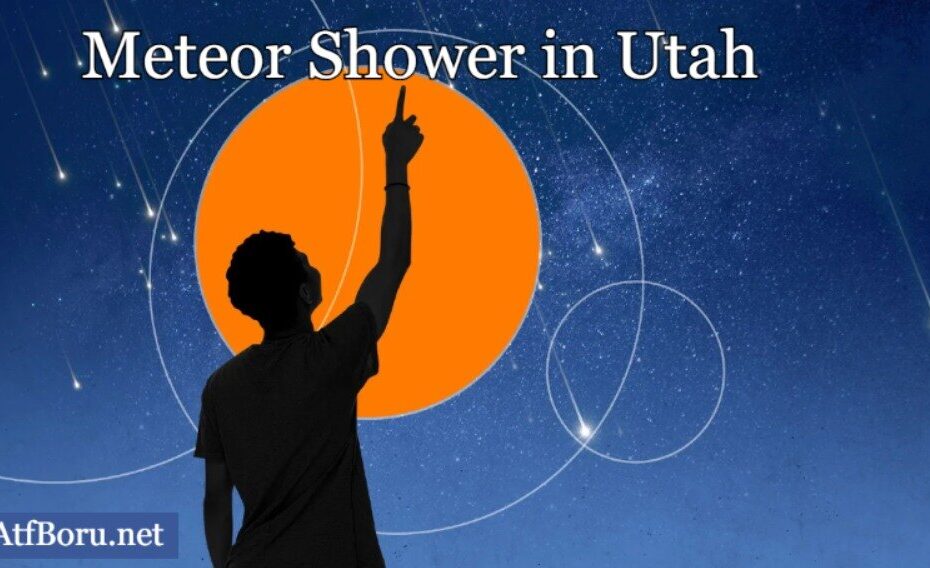Introduction
Utah is known for its stunning landscapes, national parks, and breathtaking views of the night sky. For those who are captivated by the cosmos, the state offers one of the best places to witness one of nature’s most spectacular events — the meteor shower.
The clear, dark skies and minimal light pollution in Utah make it an ideal location to experience meteor showers.
In this article, we will explore the best times to see a meteor shower in Utah, the significance of these celestial events, and tips for maximizing your meteor-watching experience.
What is a Meteor Shower in Utah

A meteor shower occurs when Earth passes through the debris left behind by a comet or asteroid. This debris consists of tiny particles that burn up as they enter Earth’s atmosphere, creating streaks of light across the sky.
Meteor showers happen at specific times of the year, and the most significant showers can feature dozens or even hundreds of meteors per hour.
The great thing about watching a meteor shower in Utah is that the state’s dry climate and clear skies often provide optimal conditions for stargazing. With minimal light pollution, Utah offers one of the best views of meteor showers in the U.S.
Why Utah is Perfect for Meteor Showers
Utah’s unique geography makes it one of the top destinations for stargazing and meteor watching. Several factors contribute to this:
- Clear Skies: Utah is known for its dry, high-altitude climate, especially in rural areas. This means there is less cloud cover, allowing for clear views of the night sky.
- Dark Skies: Light pollution is minimal in most parts of Utah, particularly in its national parks and remote areas. This provides ideal conditions for spotting meteors as the sky is darker and the stars shine brighter.
- Accessible Locations: Utah is home to several national parks and scenic areas that provide expansive, open spaces perfect for watching meteor showers. Locations like Bryce Canyon, Arches National Park, and the Great Salt Lake offer great vantage points.
When Can You See a Meteor Shower in Utah
Meteor showers occur throughout the year, but the most significant and visible ones happen at predictable times. Here are some of the major meteor showers you can see in Utah, along with the best times to catch them:
1. The Perseids (August)
The Perseid meteor shower is one of the most famous and well-known meteor showers of the year. It peaks in mid-August and is known for its bright, fast-moving meteors. The Perseids are especially popular because they are often visible from the Northern Hemisphere, including Utah.
Best Time to View: The best time to view the Perseids is during the early hours of the morning, after midnight, when the sky is darkest.
Why Utah? The combination of dry weather and clear skies makes Utah a great place to see the Perseid meteors. If you head to a high-altitude area like Bryce Canyon, you’ll have a stunning view of the celestial show.
2. The Geminids (December)
The Geminid meteor shower, which peaks in mid-December, is another excellent opportunity to witness a meteor shower in Utah. It is known for producing bright, multicolored meteors, and often provides an impressive display of shooting stars.
Best Time to View: The Geminids are best viewed after midnight when the sky is darkest. The shower’s peak often occurs around December 13–14.
Why Utah? The cold, dry winter air in Utah during December often leads to clear skies, making it one of the best places to watch the Geminid meteors.
3. The Quadrantids (January)
While the Quadrantid meteor shower is not as well-known as the Perseids or Geminids, it can still offer an exciting display of shooting stars. The Quadrantids peak in early January and often produce bright meteors with long trails.
Best Time to View: Like other showers, the best time to see the Quadrantids is after midnight. The shower’s peak typically lasts only a few hours, so you’ll need to catch it during the peak period.
Why Utah? January in Utah can bring crisp, clear skies, which are perfect for catching a glimpse of the Quadrantids.
4. The Lyrids (April)
The Lyrid meteor shower peaks in late April and is another great opportunity to witness a meteor shower in Utah. The Lyrids are known for their fast-moving meteors and are visible from both the Northern and Southern Hemispheres.
Best Time to View: The Lyrids peak in late April, typically around the 22nd and 23rd. As with other showers, viewing is best after midnight.
Why Utah? Utah’s high desert air provides clear skies and low humidity, making it an excellent place to observe the Lyrids.
5. The Orionids (October)
Named after the constellation Orion, the Orionid meteor shower peaks in October and is known for producing fast, bright meteors. The Orionids are often associated with Halley’s Comet, making this shower especially exciting for stargazers.
Best Time to View: The Orionids peak in late October, around the 21st and 22nd. Viewing is optimal after midnight.
Why Utah? As autumn settles into Utah, the cooler, drier weather creates perfect conditions for viewing the Orionids.
Best Locations to see the Meteor Shower in Utah
To get the best view of a meteor shower in Utah, you’ll want to head to locations with minimal light pollution and wide, unobstructed views of the sky. Here are some of the top spots to catch the celestial show:
1. Bryce Canyon National Park
Bryce Canyon is renowned for its stunning rock formations, but it also offers some of the best stargazing in Utah.
The park is a designated Dark Sky Park, meaning it has extremely low levels of light pollution. With clear skies and high altitude, Bryce Canyon provides an ideal setting for watching meteor showers.
2. Arches National Park
Arches National Park, famous for its natural rock arches, also offers amazing stargazing opportunities. The park’s remote location and clear skies make it an excellent place to see a meteor shower in Utah. The wide-open spaces of the park allow for unobstructed views of the sky.
3. Great Salt Lake
The Great Salt Lake is another prime location for meteor watching. The lake’s vast, open spaces provide excellent visibility, and the area’s dry climate means clear skies for most of the year.
Although it’s close to the Salt Lake City area, you can still find dark spots away from city lights to enjoy the show.
4. Dead Horse Point State Park
Dead Horse Point State Park offers one of the most stunning views in Utah. Situated near Canyonlands National Park, this park has little light pollution and plenty of open sky, making it an excellent spot to see meteors.
5. Goblin Valley State Park
Goblin Valley State Park is another incredible spot for stargazing. Its remote location and expansive skies make it perfect for watching meteor showers. The park’s unique rock formations add an extra touch to the stargazing experience.
Tips for Viewing a Meteor Shower in Utah

To make the most of your meteor shower in Utah experience, here are a few tips:
- Check the Weather: Clear skies are essential for seeing a meteor shower. Make sure to check the weather forecast before heading out.
- Bring a Blanket or Chair: You’ll want to lie back and enjoy the show, so bring a blanket or reclining chair to make yourself comfortable.
- Get Away from Light Pollution: The farther you are from city lights, the better. Try to find a dark spot to get the best view of the meteor shower.
- Be Patient: Meteor showers can be unpredictable, so give yourself plenty of time to observe. Bring snacks, drinks, and warm clothes if you’re going out at night in colder months.
Conclusion
A meteor shower in Utah is an unforgettable experience, offering a glimpse of nature’s awe-inspiring beauty.
Whether you’re watching the Perseids in August or the Geminids in December, the state’s clear skies and stunning locations provide the perfect backdrop for stargazing. With the right planning, you can enjoy a celestial light show that will leave you in awe of the universe’s wonders.
So, the next time a meteor shower is approaching, pack your gear and head to one of Utah’s beautiful parks or remote locations. You’ll be treated to one of the most breathtaking displays nature has to offer.
